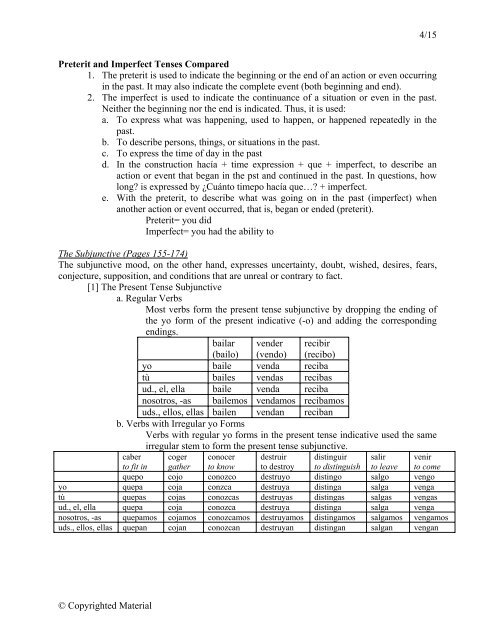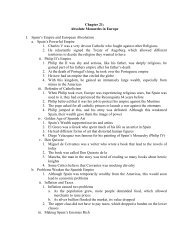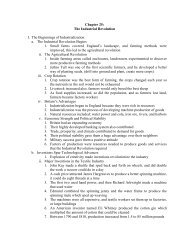1/15 © Copyrighted Material Spanish Final Study Sheet Ser vs. Estar ...
1/15 © Copyrighted Material Spanish Final Study Sheet Ser vs. Estar ...
1/15 © Copyrighted Material Spanish Final Study Sheet Ser vs. Estar ...
You also want an ePaper? Increase the reach of your titles
YUMPU automatically turns print PDFs into web optimized ePapers that Google loves.
4/<strong>15</strong><br />
Preterit and Imperfect Tenses Compared<br />
1. The preterit is used to indicate the beginning or the end of an action or even occurring<br />
in the past. It may also indicate the complete event (both beginning and end).<br />
2. The imperfect is used to indicate the continuance of a situation or even in the past.<br />
Neither the beginning nor the end is indicated. Thus, it is used:<br />
a. To express what was happening, used to happen, or happened repeatedly in the<br />
past.<br />
b. To describe persons, things, or situations in the past.<br />
c. To express the time of day in the past<br />
d. In the construction hacía + time expression + que + imperfect, to describe an<br />
action or event that began in the pst and continued in the past. In questions, how<br />
long is expressed by ¿Cuánto timepo hacía que… + imperfect.<br />
e. With the preterit, to describe what was going on in the past (imperfect) when<br />
another action or event occurred, that is, began or ended (preterit).<br />
Preterit= you did<br />
Imperfect= you had the ability to<br />
The Subjunctive (Pages <strong>15</strong>5-174)<br />
The subjunctive mood, on the other hand, expresses uncertainty, doubt, wished, desires, fears,<br />
conjecture, supposition, and conditions that are unreal or contrary to fact.<br />
[1] The Present Tense Subjunctive<br />
a. Regular Verbs<br />
Most verbs form the present tense subjunctive by dropping the ending of<br />
the yo form of the present indicative (-o) and adding the corresponding<br />
endings.<br />
bailar<br />
(bailo)<br />
vender<br />
(vendo)<br />
recibir<br />
(recibo)<br />
yo baile venda reciba<br />
tù bailes vendas recibas<br />
ud., el, ella baile venda reciba<br />
nosotros, -as bailemos vendamos recibamos<br />
uds., ellos, ellas bailen vendan reciban<br />
b. Verbs with Irregular yo Forms<br />
Verbs with regular yo forms in the present tense indicative used the same<br />
irregular stem to form the present tense subjunctive.<br />
caber<br />
to fit in<br />
coger<br />
gather<br />
conocer<br />
to know<br />
destruir<br />
to destroy<br />
distinguir<br />
to distinguish<br />
salir<br />
to leave<br />
venir<br />
to come<br />
quepo cojo conozco destruyo distingo salgo vengo<br />
yo quepa coja conzca destruya distinga salga venga<br />
tù quepas cojas conozcas destruyas distingas salgas vengas<br />
ud., el, ella quepa coja conozca destruya distinga salga venga<br />
nosotros, -as quepamos cojamos conozcamos destruyamos distingamos salgamos vengamos<br />
uds., ellos, ellas quepan cojan conozcan destruyan distingan salgan vengan<br />
© <strong>Copyrighted</strong> <strong>Material</strong>







